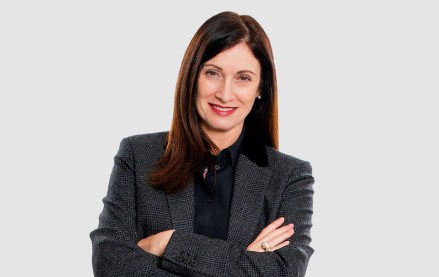National CineMedia to offer guarantees on business outcomes this upfront

The drums of the $20 billion-plus video upfront marketplace are starting to beat quietly, but their sounds will soon get much louder. One of the first video sellers to pick up sticks and test out its kit is National CineMedia, which is planning to bring new offerings to market in hopes of securing a bigger share of ad dollars.
Digiday has learned that NCM will for the first time offer guarantees on business outcomes for advertisers who commit dollars in the upfront. Sales goals will be agreed to between NCM’s sellers and the client, and “makegoods” or extra ad inventory, will be offered in case those goals are not met.
NCM executives also explained that the largest cinema ad operation — which emerged from bankruptcy last year — will offer its ad inventory across programmatic SSPs, starting with Place Exchange but eventually expanding to other platforms. Mike Rosen, NCM’s chief revenue officer, said advertisers can now target specific demographics, DMAs, zip codes, dayparts and times of day through private marketplaces.
“It allows us to really expand our marketplace to a longer tail of advertisers out there that either may not be buying direct or may have very specific data-driven needs on how they approach their media spend, coming out of different budgets,” said Rosen. “The one thing that the programmatic marketplace really needs more of is expanding the reach, especially of premium video. There’s just been a limitation of what’s available through those pipes.”
Rosen added he expects a significant increase in the number of advertisers using NCM, given their access through programmatic means, from top of funnel brand awareness all the way down to performance-driven efforts.
To make its case to advertisers this upfront, NCM is also trotting out original research playing up its advantage in securing the attention of its audience over other video media, explained Manu Singh, svp of insights/analytics & sales data strategy. Lumen Research’s work on NCM’s behalf showed a significant advantage in attention across automotive, pharma, and insurance, while cinema grew 17% in average seconds to 25.5 seconds per :30.
“It doesn’t matter if you have your own first-party data set, or if you’re a walled garden — it’s very simple,” said Singh. “Hey brand: you put in a lot of effort into brand messaging and you put together a creative ad [using] a lot of research saying you can tell your message beautifully in 30 seconds or 15 seconds. Don’t you want to know if people are watching that? We decided [with the research] to go in that direction.”
On another level of using attention, NCM said it’s also providing attention rating guarantees for select clients in their upfront deals, letting advertisers transact against Adelaide’s AU metric. The idea is to enable apples-to-apples quality comparisons across premium video.
Clients have noticed the extra tools NCM is bringing to the market.
Ron Amran, senior director of global media a Mars, for one, is making use of the Adelaide attention ratings offer — and is generally employing more attention-related metrics in the marketer’s toolbox. “The substantial investments made by NCM, in collaboration with Adelaide, in attention metrics … allows us to link their media placements more effectively to business success,” said Amran, who noted it’s not costing extra to use this yet. “In general we want to be able to identify higher quality media placements, allowing us to plan and buy more effectively.”
Similarly, Brad Audet, CMO at Mazda’s North American operations, said he’s been impressed by NCM’s investment in data and insights. He noted a Q4 2023 campaign around which NCM did a foot-traffic study, which showed a “significant” 22% lift in foot traffic to Mazda dealerships during study, with 69% of those visits happening within five days of seeing the ad at the theater.
“We uncovered that not only did cinema deliver on meaningful KPIs for Mazda, but that more than half (53%) of the visits were within five miles of a theater,” said Audet. “We were thrilled with the results. With the evolution of cinema advertising, we now know we can expect meaningful data analytics and performance KPIs from our campaigns on the big screen. We see cinema as a key media platform to drive meaningful business outcomes and brand awareness.”
And Marianne Rush, senior media manager at Indeed, has even found cinema’s upper-funnel value extends into satisfying some diverse audience outreach.
“Cinema has been an important part of our brand strategy, particularly when it comes to supporting Indeed’s Rising Voices program,” said Rush, citing a partnership with Lena Waithe and Hillman Grad that gives BIPOC filmmakers opportunities to share their perspectives on the future of work. “We’re headed into our fourth year of the program and building off of notable success including double digit lifts in unaided consideration and brand favorability as well as positive ROAS through our media mix model.”
Rush added that Indeed will continue the series this summer.
More in Media Buying

Omnicom confirms the pending exit of influential Annalect chief Slavi Samardzija
The CEO and architect of Omni departs, hinting at pending changes as Omnicon continues $13.5 billion IPG takeover bid.

WPP has its next CEO – but what do clients make of the heir apparent?
The ad industry’s hot take industrial complex went into overdrive upon yesterday’s WPP coronation. Clients are keeping their counsel, however.

Who is Cindy Rose, WPP’s insider-outsider pick for its next CEO?
The British holding company has named its next CEO — a Microsoft executive and board member of six years.








